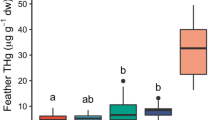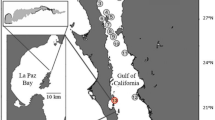Abstract
Oxidative stress (OS) and fluctuating asymmetry (FA) as risk markers for environmental stress are widely used to predict changes in the health and fitness of many animals exposed to pollutants. However, from the perspective of protecting declining amphibians, it remains to be verified which one would be a reliable indicator for amphibians exposed to long-term heavy metal pollution under natural conditions. In this study, the OS and FA of Bufo raddei exposed to natural heavy metal pollution were analyzed to determine which marker is more accurate for indicating heavy metal-induced stress. Three years of data were collected during the breeding season of B. raddei from Baiyin (BY), which has been mainly contaminated with Cu, Zn, Pb, and Cd compounds for a long period, and from Liujiaxia (LJX), which is a relatively unpolluted area. Unexpectedly, although significant accumulation of the four heavy metals was found in the kidney and liver of B. raddei from BY, the levels of superoxide dismutase, glutathione peroxidase, and malondialdehyde in these two organs were found to be irregular, with low repeatability in both BY and LJX. However, significant differences in the levels of FA were observed in B. raddei populations from these two areas over the past 3 years (P < 0.01). The degrees of FA in B. raddei populations from BY and LJX were assessed as degree 4 and 1, respectively. In short, this study suggested that FA was a more reliable and effective indicator than OS to monitor and predict long-term environmental stress on anuran amphibians.





Similar content being viewed by others
Abbreviations
- OS:
-
Oxidative stress
- FA:
-
Fluctuating asymmetry
- SOD:
-
Superoxide dismutase
- GPX:
-
Glutathione peroxidase
- MDA:
-
Malondialdehyde
- BY:
-
Baiyin
- LJX:
-
Liujiaxia
- FAMI:
-
Frequency of asymmetric manifestation of individuals
- FAMF:
-
Frequency of the asymmetric manifestation of a feature
References
Ai, S. W., Guo, R., Liu, B. L., Ren, L., Naeem, S., Zhang, W. Y., et al. (2016). A field study on the dynamic uptake and transfer of heavy metals in Chinese cabbage and radish in weak alkaline soils. Environmental Science and Pollution Research, 23(20), 20719–20727.
Al-Shami, S. A., Salmah, M. R. C., Hassan, A. A., & Azizah, M. N. S. (2011). Fluctuating asymmetry of Chironomusspp. (Diptera: Chironomidae) larvae in association with water quality and metal pollution in Permatang Rawa River in the Juru River Basin, Penang, Malaysia. Water, Air, & Soil Pollution, 216(1–4), 203–216.
Beasley, D. A. E., Bonisoli-Alquati, A., & Mousseau, T. A. (2013). The use of fluctuating asymmetry as a measure of environmentally induced developmental instability: a meta-analysis. Ecological Indicators, 30, 218–226.
Borković-Mitić, S. S., Prokić, M. D., Krizmanić, I. I., Gavrić, J., et al. (2016). Biomarkers of oxidative stress and metal accumulation in marsh frog (Pelophylax ridibundus). Environmental Science and Pollution Research, 23(10), 9649–9659.
Breno, M., Bots, J., Schaepdrijver, L. D., & Dongen, S. V. (2013). Fluctuating asymmetry as risk marker for stress and structural defects in a toxicologic experiment. Birth Defects Research, Part B: Developmental and Reproductive Toxicology, 98(4), 310–317.
Brown, N. A., Hoyle, C. I., McCARTHY, A., & Wolpert, L. (1989). The development of asymmetry: the sidedness of drug-induced limb abnormalities is reversed in situs inversus mice. Development, 107(3), 637–642.
Costantini, D., & Verhulst, S. (2009). Does high antioxidant capacity indicate low oxidative stress? Functional Ecology, 23(3), 506–509.
Dai, X. P., Feng, L., Ma, X. W., & Zhang, Y. M. (2012). Concentration level of heavy metals in wheat grains and the health risk assessment to local inhabitants from Baiyin, Gansu, China. Advanced Materials Research, 518-523, 951–956.
Eeva, T., Tanhuanpää, S., Råbergh, C., Airaksinen, S., Nikinmaa, M., & Lehikoinen, E. (2000). Biomarkers and fluctuating asymmetry as indicators of pollution-induced stress in two hole-nesting passerines. Functional Ecology, 14(2), 235–243.
Eisemberg, C. C., & Bertoluci, J. (2016). Fluctuating asymmetry in populations of the south American frog Physalaemus cuvieri (Leptodactylidae) in areas with different degrees of disturbance. Journal of Natural History, 50(23–24), 1503–1511.
Geffard, O., Budzinski, H., & His, E. (2002). The effects of elutriates from PAH and heavy metal polluted sediments on Crassostrea gigas (Thunberg) embryogenesis, larval growth and bio-accumulation by the larvae of pollutants from sedimentary origin. Ecotoxicology, 11(6), 403–416.
Hayes, T. B., Khoury, V., Narayan, A., Nazir, M., Park, A., Brown, T., & Stueve, T. (2010). Atrazine induces complete feminization and chemical castration in male African clawed frogs (Xenopus laevis). Proceedings of the National Academy of Sciences, 107(10), 4612–4617.
Hosken, D., Blanckenhorn, W., & Ward, P. (2000). Developmental stability in yellow dung flies (Scathophaga stercoraria): fluctuating asymmetry, heterozygosity and environmental stress. Journal of Evolutionary Biology, 13(6), 919–926.
Jofré, M. B., Antón, R. I., & Caviedes-Vidal, E. (2012). Lead and cadmium accumulation in anuran amphibians of a permanent water body in arid Midwestern Argentina. Environmental Science and Pollution Research, 19(7), 2889–2897.
King, M. A., Sogbanmu, T. O., Osibona, A. O., Doherty, F., & Otitoloju, A. A. (2012). Toxicological evaluation and usefulness of lipid peroxidation as biomarker of exposure to crude oil and petroleum products tested against African catfish, Clarias gariepinus and hermit crab, Clibanarius africanus. Nature, Environment and Pollution Technology, 11(1), 1–6.
Leung, B., Forbes, M. R., & Houle, D. (2000). Fluctuating asymmetry as a bioindicator of stress: comparing efficacy of analyses involving multiple traits. The American Naturalist, 155(1), 101–115.
Limón-Pacheco, J., & Gonsebatt, M. E. (2009). The role of antioxidants and antioxidant-related enzymes in protective responses to environmentally induced oxidative stress. Mutation Research, Genetic Toxicology and Environmental Mutagenesis, 674(1), 137–147.
Liu, B. L., Ma, X. W., Ai, S. W., Zhu, S. Y., Zhang, W. Y., & Zhang, Y. M. (2016). Spatial distribution and source identification of heavy metals in soils under different land uses in a sewage irrigation region, northwest China. Journal of Soils and Sediments, 16(5), 1547–1556.
Loumbourdis, N., Kostaropoulos, I., Theodoropoulou, B., & Kalmanti, D. (2007). Heavy metal accumulation and metallothionein concentration in the frog Rana ridibunda after exposure to chromium or a mixture of chromium and cadmium. Environmental Pollution, 145(3), 787–792.
Lushchak, V. I. (2011). Environmentally induced oxidative stress in aquatic animals. Aquatic Toxicology, 101(1), 13–30.
Monna, F., Camizuli, E., Revelli, P., Biville, C., Thomas, C., Losno, R., et al. (2011). Wild brown trout affected by historical mining in the Cévennes National Park, France. Environmental Science & Technology, 45(16), 6823–6830.
Nan, Z., & Zhao, C. (2000). Heavy metal concentrations in grey calcareous soils of Baiyin region, Gansu province, P.R. China. Water, Air, and Soil Pollution, 118, 131–141.
Nikashin, I. (2005). Assessment of the developmental stability of the Voronezh River in the marsh frog. Progress in Natural Science, 13, 24–26.
Nwaubani, B. I., Amaeze, N. H., & Idowu, E. T. (2015). Heavy metal bioaccumulation and oxidative stress in Austroaeschna inermis (Dragon fly) of the Lagos urban ecosystem. Journal of Environmental Chemistry and Ecotoxicology, 7(1), 11–19.
Oliva, M., Vicente, J. J., Gravato, C., Guilhermino, L., & Galindo-Riaño, M. D. (2012). Oxidative stress biomarkers in Senegal sole, Solea senegalensis, to assess the impact of heavy metal pollution in a Huelva estuary (SW Spain): seasonal and spatial variation. Ecotoxicology and Environmental Safety, 75, 151–162.
Otitoloju, A., & Olagoke, O. (2011). Lipid peroxidation and antioxidant defense enzymes in Clarias gariepinus as useful biomarkers for monitoring exposure to polycyclic aromatic hydrocarbons. Environmental Monitoring and Assessment, 182(1–4), 205–213.
Palmer, A. R., & Strobeck, C. (1986). Fluctuating asymmetry: measurement, analysis, patterns. Annual Review of Ecology and Systematics, 17(1), 391–421.
Papadimitriou, E., & Loumbourdis, N. (2002). Exposure of the frog Rana ridibunda to copper: impact on two biomarkers, lipid peroxidation, and glutathione. Bulletin of Environmental Contamination and Toxicology, 69(6), 0885–0891.
Peligro, V. (2016). Assessment of fluctuating asymmetry in the body shapes of Nile tilapia (Oreochromis niloticus) from Masao river, Butuan city, Philippines. Aquaculture, Aquarium, Conservation & Legislation - International Journal of the Bioflux Society, 9(3).
Si, W. T., Ji, W. H., Yang, F., Lv, Y., Wang, Y. M., & Zhang, Y. M. (2011). The function of constructed wetland in reducing the risk of heavy metals on human health. Environmental Monitoring and Assessment, 181(1), 531–537.
Si, W. T., Zhang, W. Y., Lv, Y., Yang, F., Liu, J. M., & Zhang, Y. M. (2014). Heavy metal removal in a constructed wetland and benefits for the development of the toad Bufo raddei. Polish Journal of Environmental Studies, 23(6), 2207–2215.
Siegel, M. I., & Smookler, H. H. (1973). Fluctuating dental asymmetry and audiogenic stress. Growth, 37(1), 35–39.
Spolyarich, N., Hyne, R. V., Wilson, S. P., Palmer, C. G., & Byrne, M. (2011). Morphological abnormalities in frogs from a rice-growing region in NSW, Australia, with investigations into pesticide exposure. Environmental Monitoring and Assessment, 173(1–4), 397–407.
Swaddle, J. P., & Witter, M. S. (1994). Food, feathers and fluctuating asymmetries. Proceedings of the Royal Society of London B: Biological Sciences, 255(1343), 147–152.
Taiwo, I. E., Henry, A. N., Imbufe, A. P., & Adetoro, O. O. (2014). Heavy metal bioaccumulation and biomarkers of oxidative stress in the wild African tiger frog, Hoplobatrachus occipitalis. African Journal of Environmental Science and Technology, 8(1), 6–15.
Wang, M. Z., & Jia, X. Y. (2009). Low levels of lead exposure induce oxidative damage and DNA damage in the testes of the frog Rana nigromaculata. Ecotoxicology, 18(1), 94–99.
Yang, D. D., Huang, W. J., & Chen, W. H. (2006). Species diversity of amphibians and reptiles in Wugongshan National Forest Park of Jiangxi Province. Sichuan Journal of Zoology, 25(2), 289–293.
Zhelev, Z., Arnaudov, A. D., Popgeorgiev, G., & Dimitrov, H. A. (2012). Assessment of ecological status of two rivers with different types of anthropogenic pollution in Southern Bulgaria based on the level of fluctuating asymmetry in the populations of marsh frog Rana ridibunda (Amphibia: Ranidae). Acta Zoologica Bulgarica, 4, 225–231.
Zhelev, Z. M., Popgeorgiev, G. S., & Georgieva, Z. K. (2014). Fluctuating asymmetry in the populations of Pelophylax ridibundus and Pseudepidalea viridis (Amphibia: Anura) in the region of the lead and zinc plant “Kardzhali” (South Bulgaria). Acta Zoologica Bulgarica, 66(1), 83–87.
Zhelev, Z. M., Popgeorgiev, G. S., & Mehterov, N. H. (2015). Fluctuating asymmetry in Pelophylax ridibundus (Amphibia: Ranidae) as a response to anthropogenic pollution in south Bulgaria. Archives of Biological Sciences, 67(3), 1009–1023.
Zocche, J. J., Silva, L. A., Damiani, A. P., Mendonça, R. Á., Peres, P. B., Santos, C. E. I., et al. (2014). Heavy-metal content and oxidative damage in Hypsiboas faber: the impact of coal-mining pollutants on amphibians. Archives of Environmental Contamination and Toxicology, 66(1), 69–77.
Zocche, J. J., Damiani, A. P., Hainzenreder, G., Mendonça, R. Á., Peres, P. B., Santos, C. E. I., et al. (2013). Assessment of heavy metal content and DNA damage in Hypsiboas faber (anuran amphibian) in coal open-casting mine. Environmental Toxicology and Pharmacology, 36(1), 194–201.
Acknowledgements
The work was supported by the National Natural Science Foundation of China (Nos. 31300437 and 41171391). We thank Sajid Naeem for reviewing the manuscript for clarity.
Author information
Authors and Affiliations
Corresponding author
Rights and permissions
About this article
Cite this article
Guo, R., Zhang, W., Ai, S. et al. Fluctuating asymmetry rather than oxidative stress in Bufo raddei can be an accurate indicator of environmental pollution induced by heavy metals. Environ Monit Assess 189, 293 (2017). https://doi.org/10.1007/s10661-017-5991-6
Received:
Accepted:
Published:
DOI: https://doi.org/10.1007/s10661-017-5991-6




